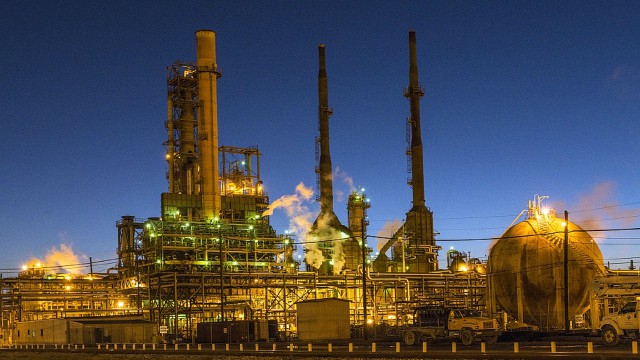Baytex Energy Corp. (TSX:BTE)(NYSE:BTE) has started 2017 down 30%, and this kind of sell-off has certainly poisoned sentiment surrounding the stock. A closer look, however, reveals why the sell-off should be seen a positive thing: it allows investors to get the stock at a large discount.
Baytex is currently trading at the same price it was trading at one year ago, when oil prices were US$33 per barrel. This may be part of the reason why Baytex has barely participated in the recent plunge in oil prices from US$53 to US$48 per barrel — in fact, Baytex shares rose during the sell-off.
After a 30% sell-off earlier in the year (while oil prices were flat), the selling pressure in the stock is likely slowing, and investors are seeing value at these levels. Currently, analysts at Bank of Nova Scotia have an $8.25 target price on the stock (84% above current levels), and this target price is quite reasonable once these two events occur.
1. Improving sentiment on Canadian energy and improving operations will drive revaluation
How undervalued is Baytex? Assuming an average oil price of US$58 for 2017 (which will be discussed next), Baytex is trading at an enterprise value of about 6.1 times its debt-adjusted cash flow. This is a common valuation measure for energy companies that basically takes the whole value of the business (net debt plus all of the outstanding shares) and looks at it as a multiple of how much cash flow the business earns, not including interest payments. It allows the investor to see what sort of cash flow the business is generating relative to the debt it has taken on.
A valuation of 6.1 times is cheap for Baytex. Not only is its peer group on average trading at close to seven times, but historically, Baytex has usually traded at about 7.2 times (this is the three-year average according to TD Bank).
Basically, Baytex is pricing in a fairly bleak oil outlook for 2017. The stock is basically reflecting oil prices around current levels for the entire year — an unlikely outcome. If Baytex were to simply trade up to 7.2 times debt-adjusted cash flow, the stock would be worth close to $7 per share — a solid 31% performance from current levels.
This is quite conservative, however, since it would mean Baytex is still trading at a massive discount to its peer group. While Baytex’s peer group is trading at only around seven times debt-adjusted cash flow now (after nearly all the names have sold off 30%), they usually trade around nine.
If Baytex can close this gap even a little bit, an $8 dollar share price for Baytex would not be out of the question. Baytex is making strides in this area. The company recently re-affirmed a solid 3-4% production growth for 2017 by running more rigs than last year on its Eagle Ford asset and by bringing back previously shut-in Canadian heavy oil production.
The company was able to generate positive free cash flow in 2016 despite oil prices averaging only US$43 for the year, and it has been making major progress in repaying its debt (the debt has been a reason investors have stayed away from the stock).
If Baytex continues to reduce its debt and keep costs down, this should close the gap between it and its peers, and Canadian oil stocks in general should revalue upwards as concerns over a border adjustment tax fade and oil prices rise.
2. Oil prices should improve in 2017
While oil may be selling off now, a US$58 average price for 2017 is not unreasonable. The oil market is currently one million barrels per day undersupplied. If demand stays strong, and especially if OPEC renews its cuts for the second half of the year, global oil inventories will continue to fall closer to long-term averages.
This is a supportive environment for prices and will be a catalyst for Baytex shares as the year progresses.









